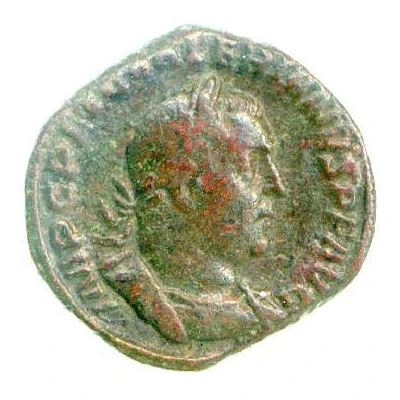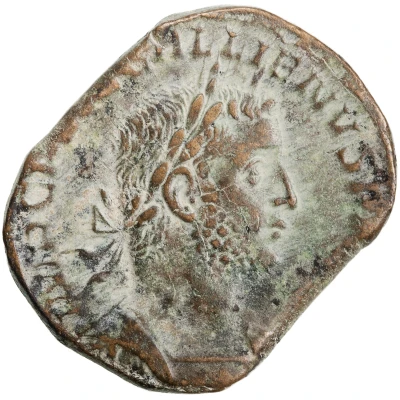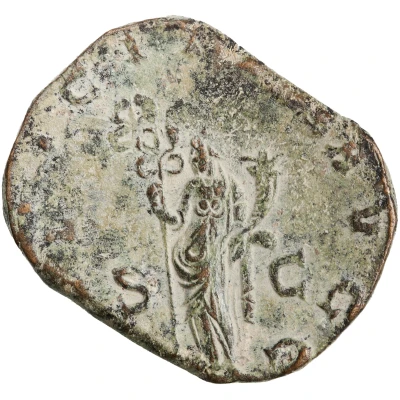


© American Numismatic Society (ANS)
Sestertius - Gallienus APOLLINI CONSERVA S C; Apollo
| Bronze | 23 g | 28 mm |
| Issuer | Rome › Roman Empire (27 BC - 395 AD) |
|---|---|
| Emperor | Gallienus (Publius Licinius Egnatius Gallienus) (253-268) Valerian (Publius Licinius Valerianus) (253-260) |
| Type | Standard circulation coin |
| Years | 255-256 |
| Value | Sestertius (⅛) |
| Currency | Antoninianus, Reform of Caracalla (AD 215 – 301) |
| Composition | Bronze |
| Weight | 23 g |
| Diameter | 28 mm |
| Shape | Round (irregular) |
| Technique | Hammered |
| Demonetized | Yes |
| Updated | 2024-10-05 |
| Numista | N#286842 |
|---|---|
| Rarity index | 100% |
Reverse
Apollo, nude, standing right, holding laurel-branch in right hand and lyre set on rock in left hand.
Script: Latin
Lettering: APOLLINI CONSERVA S C
Translation:
Apollini Conservatori. Senatus Consultum.
To Apollo the protector. Decree of the senate.
Comment
Mass varies: 18.87–32.09 g;Diameter varies: 25–30.7 mm;
Example of this type:
American Numismatic Society (ANS)
Source:
Online Coins of the Roman Empire (OCRE)
Interesting fact
The Sestertius coin featuring Gallienus and Apollo is interesting because it highlights the Roman Empire's emphasis on deifying their emperors. Gallienus was depicted with Apollo, the god of the sun, music, poetry, and prophecy, signifying the emperor's connection to the divine. This coin was circulated during a time when the Roman Empire was facing numerous challenges, including invasions, plagues, and political instability. Despite these challenges, the empire continued to produce coins that reflected their values and beliefs, showcasing their resilience and determination to persevere.



